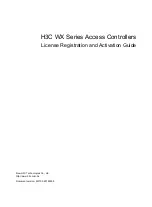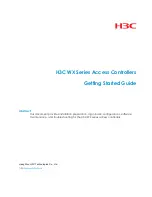
14
Subwindow „Decoder“
8.6.11. V
8.6.11. V
8.6.11. V
8.6.11. V
8.6.11. Volume / Mute
olume / Mute
olume / Mute
olume / Mute
olume / Mute
With this function you can mute the sound and – by double
clicking – you can set 4 different levels of the overall volume. It
is best to allocate this function to both directions.
8.6.12. Dynamic brake
8.6.12. Dynamic brake
8.6.12. Dynamic brake
8.6.12. Dynamic brake
8.6.12. Dynamic brake
In order to simulate this function, that is often present in diesel
and electric locomotives, as close to the original as possible the
acceleration and deceleration is reduced to half the time. It is
best to allocate this function to both directions.
8.6.13. Sound slots
8.6.13. Sound slots
8.6.13. Sound slots
8.6.13. Sound slots
8.6.13. Sound slots
Here you enter the numbers of the desired user sound slots. If
you have already imported some user sound slots then you can
click onto the corresponding square with the right mouse button.
A choice list appears showing all occupied sound slot numbers
and the corresponding sound files.
Fig.19.: Popup Menu for selecting the Sound Slots
8.6.14.
8.6.14.
8.6.14.
8.6.14.
8.6.14. Configuration of outputs
Configuration of outputs
Configuration of outputs
Configuration of outputs
Configuration of outputs .........................
.........................
.........................
.........................
.........................
(lights and AUX-outputs) (CV 113- CV 120)
(lights and AUX-outputs) (CV 113- CV 120)
(lights and AUX-outputs) (CV 113- CV 120)
(lights and AUX-outputs) (CV 113- CV 120)
(lights and AUX-outputs) (CV 113- CV 120)
This parameter allows you to adjust the type and intensity of
physical outputs.
The available choices are:
• Dimmer: uniform voltage is available at the output for operating
constant functions.
• Blinking light (Phase 1) / Blinking light (Phase 2)
• Strobe: Stroboscopic effect
• Double Strobe: Stroboscopic effect with double blinking
• Fire box: generates flickering light for the imitation of the open
fire box. This function makes sense in conjunction with the
sound of shovelling coal.
• Smoke generator: while the locomotive is stopped a smoke
generator only heats to a limited degree when operating in
conjunction with driving noises. However, it operates to its
maximum in synchronization with the exhaust chuffs during
movement. If you wish to simulate a uniform amount of smoke
coming out of the chimney it is recommended to set the output
function for the smoke generator to „Dimmer“.
Fig.18.: Notch behaviour
8.6.5. Acceleration / Deceleration
8.6.5. Acceleration / Deceleration
8.6.5. Acceleration / Deceleration
8.6.5. Acceleration / Deceleration
8.6.5. Acceleration / Deceleration
This function turns off the delay in accelerating or slowing
down as set in the window „Driving Characteristics“ (also refer
to 8.2.3.).
This is useful when the locomotive is set to shunting mode and
therefore should respond quicker to your commands.
It is best to allocate this function to both directions.
8.6.6. Shunting mode
8.6.6. Shunting mode
8.6.6. Shunting mode
8.6.6. Shunting mode
8.6.6. Shunting mode
This function reduces the speed to half of the current speed. It
is recommended to allocate the shunting mode to the same
function as the acceleration / deceleration. It is best to allocate
this function to both directions.
8.6.7. Sound on / off
8.6.7. Sound on / off
8.6.7. Sound on / off
8.6.7. Sound on / off
8.6.7. Sound on / off
With this you activate all driving noises and all other sounds that
depend on the driving noises. It is best to allocate this function
to both directions.
8.6.8. Shift mode
8.6.8. Shift mode
8.6.8. Shift mode
8.6.8. Shift mode
8.6.8. Shift mode
All alternative sound slots that are parallel to the regular sounds
are activated with shift mode. When shift mode is active all
regular sound slots are deactivated (also refer to chapter 9.7.).
Pure (electromechanical) functions are affected by this.
8.6.9. Fan sound
8.6.9. Fan sound
8.6.9. Fan sound
8.6.9. Fan sound
8.6.9. Fan sound
This function activates the sound channel for the fan that runs
parallel to the actual driving noise. This function is particularly
useful for electric locomotives where you can hear the fan
continuously in the background.
It is best to allocate this function to both directions.
8.6.10. Doppler effect
8.6.10. Doppler effect
8.6.10. Doppler effect
8.6.10. Doppler effect
8.6.10. Doppler effect
This function simulates the so called Doppler Effect as it is
heard when a train is moving away very quickly. This function is
most useful in combination with the sound of a horn or a
whistle activated with the same function button (how to activate
the Doppler Effect during operation is described in chapter
13.1.1.).
It is best to allocate this function to both directions.
• Fade lights up and down: contrary to the setting „Dimmer“ the
lights do not appear at full brightness immediately but are
slowly fading up respectively down.
• Mars light: Simulation of a blinking warning light mainly used
on American locomotives.
• Gyro light: Simulation of a rotating beacon.
• Rule 17 forward / rule 17 back-up: simulates a dimming method
of American headlights.
• Pulse (limited time): lights up when activated and switches off
after a certain time automatically. The „Switch-on Period“ is
set with the „Brightness“ controller.
• Ditch light (Phase 1) / ditch light (Phase 2): Setting for additional
headlights for American locomotives
8.6.15. Blinking frequency of strobe effects (CV 112)
8.6.15. Blinking frequency of strobe effects (CV 112)
8.6.15. Blinking frequency of strobe effects (CV 112)
8.6.15. Blinking frequency of strobe effects (CV 112)
8.6.15. Blinking frequency of strobe effects (CV 112)
The time can be set between 0.262 seconds (value 4) up to
4.194 seconds (value 64) and affects all blinking effects.
8.6.16. Activate LGB® mode (CV 49)
8.6.16. Activate LGB® mode (CV 49)
8.6.16. Activate LGB® mode (CV 49)
8.6.16. Activate LGB® mode (CV 49)
8.6.16. Activate LGB® mode (CV 49)
All ESU decoders except M4 can be operated with the LGB
multiple train control system (MZS). This mode must be activated
here prior to use.
8.6.17. Behaviour of function buttons
8.6.17. Behaviour of function buttons
8.6.17. Behaviour of function buttons
8.6.17. Behaviour of function buttons
8.6.17. Behaviour of function buttons .................
.................
.................
.................
.................
(LokSound 2 mode) (CV 49)
(LokSound 2 mode) (CV 49)
(LokSound 2 mode) (CV 49)
(LokSound 2 mode) (CV 49)
(LokSound 2 mode) (CV 49)
In LokSound 2 mode all sounds and functions will be activated
whenever the function button is pressed (on or off).
8.6.18. Märklin® delta mode (CV 49)
8.6.18. Märklin® delta mode (CV 49)
8.6.18. Märklin® delta mode (CV 49)
8.6.18. Märklin® delta mode (CV 49)
8.6.18. Märklin® delta mode (CV 49)
Here you can set the decoder for operation with Märklin®
Delta-devices.
8.7. Manual CV entry
8.7. Manual CV entry
8.7. Manual CV entry
8.7. Manual CV entry
8.7. Manual CV entry
The LokProgrammer software offers all CVs at a glance. In this
display you can adjust all CVs in decimal values and save the CV
list as a text document.
Change CVs manually:
Change CVs manually:
Change CVs manually:
Change CVs manually:
Change CVs manually:
• Click onto the field with the decimal values of the CV you want
to change
• Enter the new value
• Click onto the button „Check Values and Accept“.
Export CV
Export CV
Export CV
Export CV
Export CV-List as text file:
-List as text file:
-List as text file:
-List as text file:
-List as text file:
• Click onto the button „Export…“
• Save the file as .txt-file in the desired folder
• Now you can read and print this file with any text processing
program. Changes in this document do not affect the project
file in the LokProgrammer.
Summary of Contents for LokProgrammer
Page 35: ...35...















































